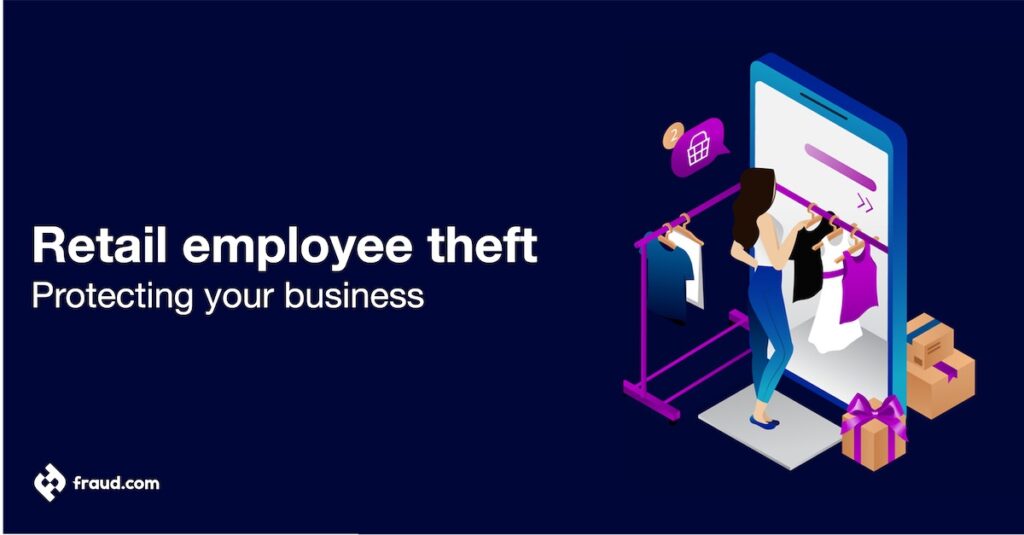Retail businesses face numerous challenges daily, one of the most serious being employee theft. Despite increased awareness, internal employee theft remains a significant threat with far-reaching consequences on the company’s bottom line, trust with customers and overall reputation. To combat this issue, retail businesses must develop robust loss-prevention strategies.
Technological innovations can be employed to enhance traditional loss prevention efforts, creating a safer and more secure retail environment. In this article, we will discuss the types and use cases of employee theft, effective prevention measures, and consequences of retail theft, along with insights into how aiReflex can support businesses in safeguarding their assets.
Table of Contents
ToggleWhat is retail employee theft?
Retail employee theft, also known as internal theft, occurs when employees of retail stores or businesses steal inventory, money, or information from their retail business employer. Ranging from sales record manipulation and falsified returns to unauthorised possession of items.
According to the National Retail Federation’s annual retail theft survey, employee theft continues to be a significant concern for loss prevention professionals. Retail employee theft contributes to billions of dollars in losses for businesses annually, affecting their bottom line. It is important for businesses to understand the different types of employee theft and implement strategies to prevent and minimise losses due to dishonest employees.
Types and examples of employee theft in retail
There are various types of employee theft that can occur in retail businesses, some common examples include:
- Stealing inventory: Employees may steal products or merchandise directly from the store shelves or warehouse, leading to inventory discrepancies and lost revenue.
- Cash theft: Retail employees may steal cash from registers, manipulate transactions or pocket customer payments, affecting the business’s accounts.
- Credit card and gift card theft: Dishonest employees may misuse customer credit card information or commit gift card fraud by stealing or manipulating the balances on cards.
- Time theft: Employees may engage in time theft by overstaying breaks, clocking in for a coworker or claiming unworked hours on timesheets.
- Intellectual property theft: Retail employees may steal sensitive company information, such as customer data, pricing strategies, or marketing plans for personal gain or share with competitors.
- Fraudulent returns and refunds: Internal theft in retail can involve employees processing fake returns or issuing unauthorized refunds for personal gain.
Retail employee theft use cases
Retail employee theft is a large issue across all segments of the retail industry. The Annual Retail Theft Survey 2022 conducted by the National Retail Federation reports that employee theft has risen in priority in recent years by 56.9%. Moreover, employee theft statistics reveal that retail businesses lose more to internal theft than shoplifting.
In some cases, employees may steal expensive merchandise to sell or exchange for cash or other goods. In others, they may process refunds for non-existent returns, creating an inflated store credit balance for themselves or someone they know.
Combating these use cases requires a multi-layered loss prevention strategy for retailers that includes background checks, surveillance and monitoring, clear policies and procedures, and regular audits to prevent employee theft.
How to prevent employee theft in retail
Preventing employee theft in retail requires a proactive approach that combines proper employee screening, training, and monitoring. Retail stores can follow these steps to minimise the risk of theft by employees:
- Conduct thorough background checks during the hiring process to identify potential risks before hiring.
- Establish clear policies and procedures addressing expected employee behaviour and the consequences of employee theft.
- Provide training and awareness programs to educate employees about the impact of theft on the business and the importance of adhering to company policies.
- Implement regular inventory audits and cash controls to identify discrepancies or signs of internal theft promptly.
- Utilise surveillance technology, such as video cameras and electronic article surveillance (EAS) systems to monitor employee actions and deter theft.
- Encourage open communication and reporting of suspicious behaviour among employees without fear of retaliation.
- Develop a strong loss prevention team dedicated to investigating and addressing theft incidents.
Retail employee theft consequences
When retail employee theft is discovered, it is crucial to conduct a thorough investigation to determine the extent of the problem and hold the responsible individuals accountable. Consequences of employee theft in retail can include:
- Financial loss: The average dollar loss due to internal theft can burden businesses, affecting their bottom line.
- Legal consequences: Employee theft can lead to lawsuits and prosecution against dishonest employees.
- Damage to reputation: Internal theft incidents can negatively impact the reputation of the retail store, resulting in loss of customers and affecting future sales.
To effectively investigate and address retail employee theft, businesses should:
- Gather and document evidence, such as surveillance footage, inventory discrepancies, and witness statements.
- Follow standardised investigative procedures, adhering to legal and ethical requirements.
- Maintain confidentiality during the investigation process to protect the privacy of all parties involved.
- Cooperate with law enforcement authorities, if necessary.
- Ensure that appropriate disciplinary measures are taken, such as termination or legal action against the dishonest employee.
Preventing retail employee theft with aiReflex
To enhance loss prevention efforts, businesses can use sophisticated technology like aiReflex to identify and prevent retail employee theft. aiReflex uses a multi-layer defence system, including explainable AI, to accurately determine which transactions are legitimate in real time.
By using advanced machine learning algorithms, aiReflex can identify suspicious behaviour patterns in employee transactions and flag potential theft incidents. This provides retailers with invaluable insights that can be used to improve internal controls and proactively mitigate theft risks.
By incorporating aiReflex into their loss prevention strategy, retailers can efficiently combat internal theft, improve customer trust, and ultimately protect their bottom line. The integration of cutting-edge technology such as aiReflex can support retail businesses in maintaining a secure and theft-free environment, ensuring continued growth and success.









